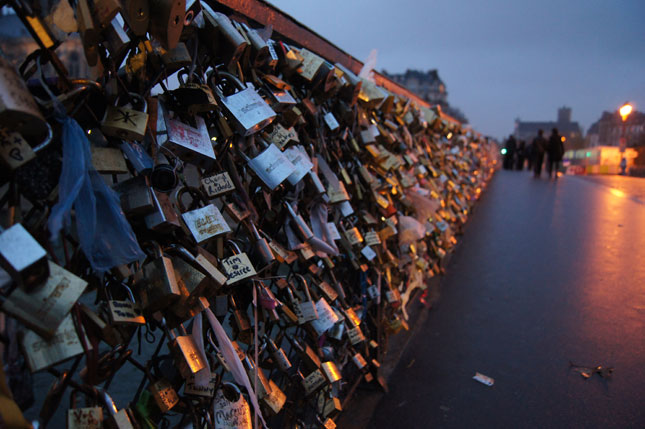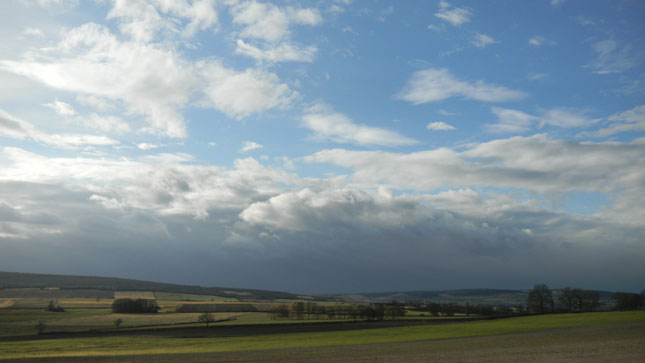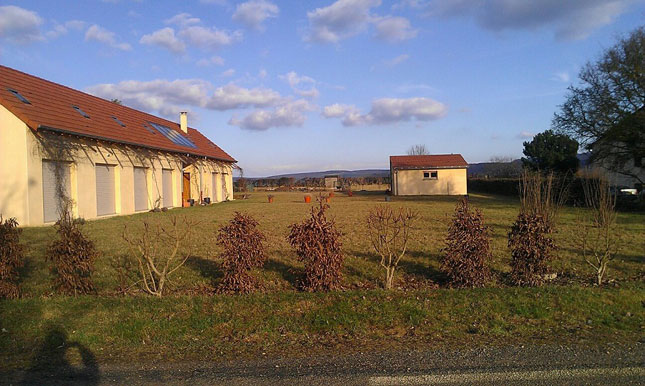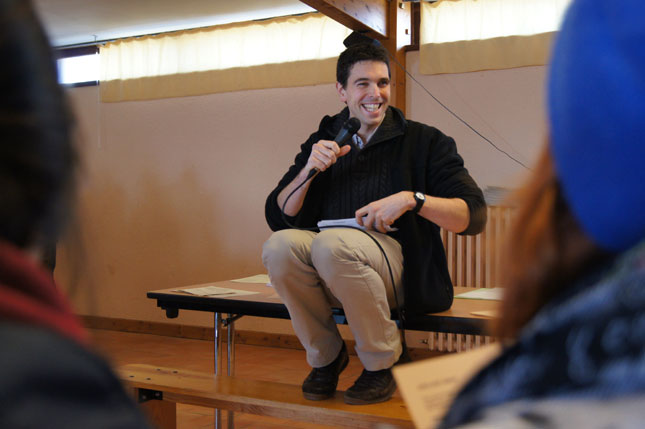Pilgrimage: France
This spring, 12 students explored a new rhythm in their life and faith through immersion in the patterns of another’s daily pace.
Pilgrimage: France, offered by the Office of the Chaplaincy, continues a tradition of traveling to destinations of religious vibrancy and global tension as a method for students to grow deeper in their own faith. After a day in Paris, the group journeyed to the Taizé community, an ecumenical, monastic community in the south of France.
With none of the usual distractions of life, students and others in the community can focus on their own spiritual journey. “It was a completely new way of living,” says Emily Cobb, director of multifaith initiatives. “We weren't on our phones, on the Internet, watching TV. It took a couple of days to get into the rhythm, but by the end, the rhythm felt so natural. In some ways it feels more natural than [home].”
The change in pace was an important lesson in balance. “The rhythm of life at Richmond is centered on doing, and the rhythm of life in Taizé is centered on being,” says Craig Kocher, University chaplain. “Here, we learn to do things — we learn to study, and we learn to set goals and meet them. There, we learn how to be — how to be with ourselves, how to be in the presence of other people, and how to be in the presence of God, without having to accomplish anything.”
Taizé’s draw is evident in the residents and visitors who traveled from all over the world to experience life in the community. The diversity offered a distinct opportunity for students to explore the similarities and differences that exist just within Christianity.
“You can come from different backgrounds and different ways of practicing your faith, and enter into this rhythm together,” Cobb says. “To be in that rhythm with people from all over the world, you realize the fullness of Christian expression, that there's not one way that Christianity is done.”
Grace DeChavez, ’14, a participant in Pilgrimage: France, agrees that discussing faith with other students was a chance to explore her own ideas and beliefs. “[Our group] bonded through exploration, reflection, and pure togetherness. It meant a lot to me that I was able to step out of my comfort zone and open up to them. It was a great feeling to be around students of similar faiths, and we learned a lot about ourselves from one another.”
Below, students document the experience of reawakening their faith and life in Taizé through their own words and photos.

“On our first day in Paris, we stumbled upon a bridge overlooking the back of Notre Dame, and the gates along the sides of the bridge are covered in padlocks. All of the locks have initials with a heart in the middle, or a family name, or a symbol of some kind. It was a beautiful reminder of the countless number of personal bonds that are formed out of love.”
—Perry Lowder, ’14

“The Taizé community is situated amidst rolling hills in the Burgundy region of France. A refreshing and renewing juxtaposition to urban sightseeing in Paris, the simplicity of life in the French countryside secured within me transcendent peace. It is here that I learned and experienced the power of stillness.”
—Kate Workman, ’14

“We went to three church services a day; it was something I looked forward to each day I was there. People from around the world were on a spiritual journey and it was amazing to hear their stories. Because of the busy, fast-paced environment we live in at UR, I am finding time for silence and reflection, which are some of the main practices at Taizé.”
—Grace DeChavez, ’14

“Every morning, I awoke early and was able to reflect on the past and to pray about the present and future. I took this picture on Monday morning, our first full day at Taizé, as the sun was coming over the nearby mountains.”
—Cameron Lee, ’12

“The French countryside evokes a great sense of nostalgia. I found myself anxious to wake up early to run as the sun rose. The beauty of God's creation was apparent, and it took my breath away.”
—Whitney Cavin, ’12

“This chapel in a village near Taizé is centuries old, but I am sure the original builders never guessed it would today contain a guestbook with signatures from around the world. A quiet landscape has come to be a space of reflection, dialogue, and rest for people of faith all over the globe.”
—Grace Leonard, ’12

“Throughout the week in Taizé, the group spent time with Brother Maksim, who lives in Taizé and leads Bible study. Brother Maksim speaks at least four languages, but what struck me most was his ability to communicate in his smile. This picture captures one such moment of humor and joy in one Bible study, and I think it really sums up the spirit of our trip: that love and faith go beyond language, and like a smile, can be evident without words.”
—Perry Lowder, ’14

“The Church of Reconciliation is a place where we prayed three times a day. The service consisted of the songs of Taizé, short repeated songs printed in different languages. Each prayer time, the whole room sang together and then sat in meditative silence. At Taizé, song is a way for everyone to connect through God.”
—Cait Manak, ’12
